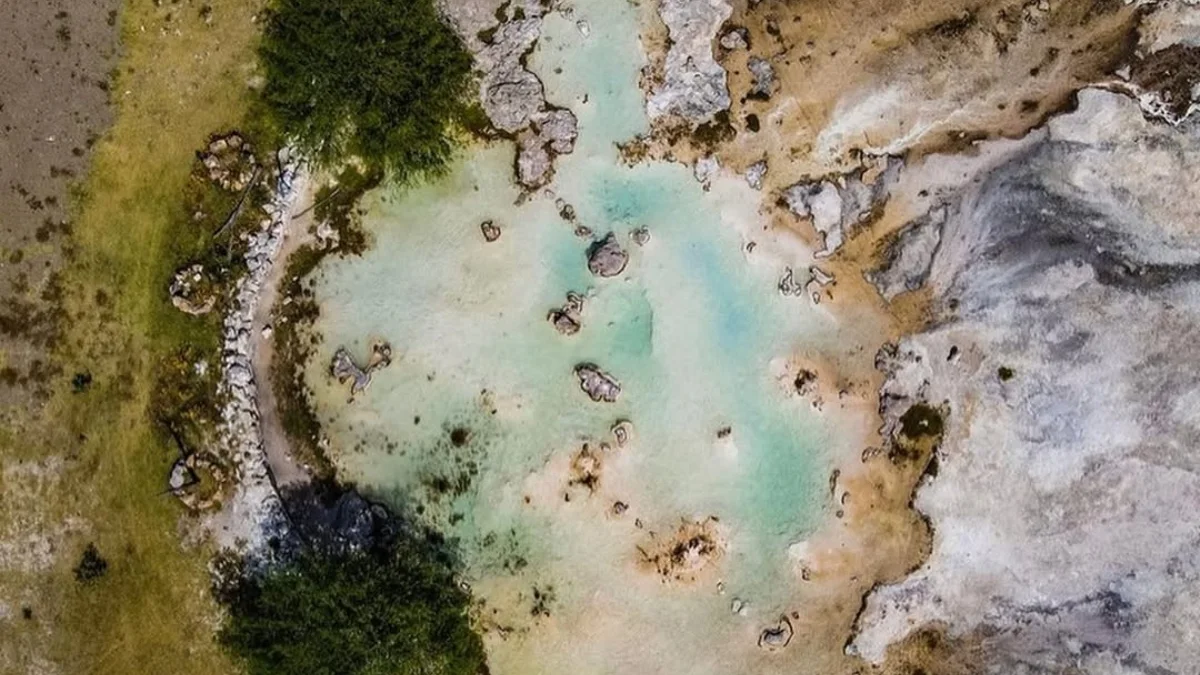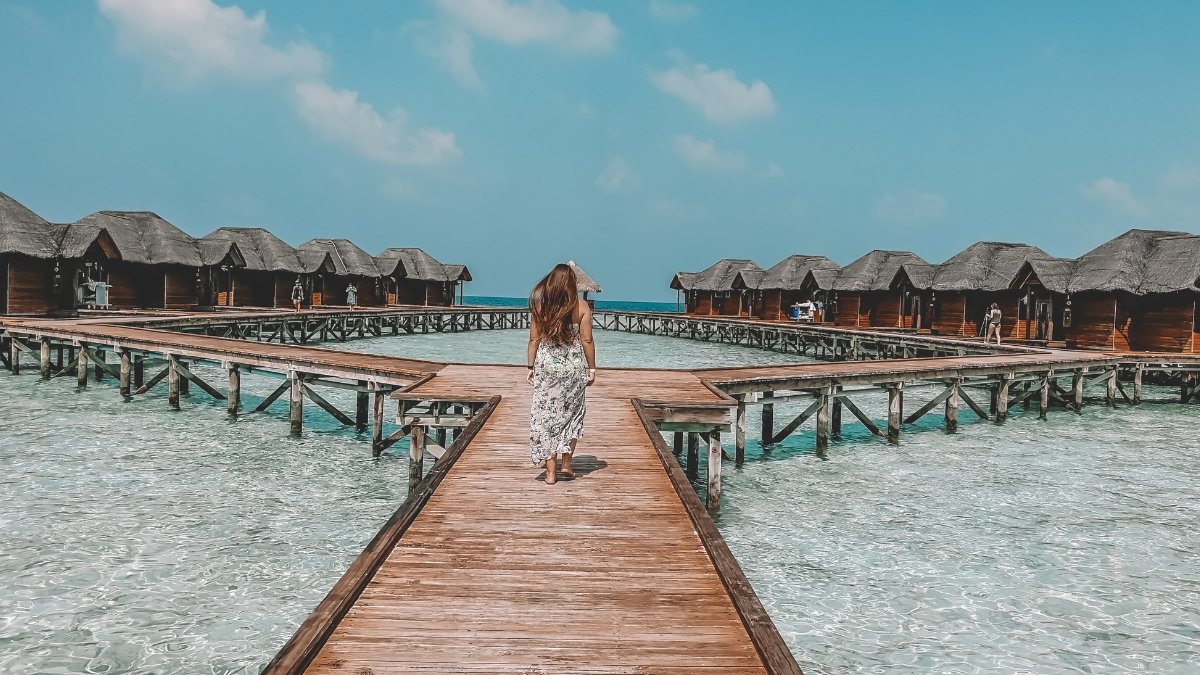Dream destinations are becoming nightmares for local communities as mass tourism wreaks havoc on their daily lives. From Bali’s water shortages to Venice’s crumbling foundations, beloved travel spots are buckling under the weight of endless visitors.
Local families find themselves priced out of their neighborhoods, while sacred traditions become tourist spectacles. Cities that once buzzed with authentic culture now feel like crowded theme parks. The situation has become so dire that residents are taking to the streets, begging tourists to stay away.
But there’s hope for responsible travelers who care about preserving these special places. In this eye-opening guide, we reveal 15 destinations where tourism has reached a critical tipping point.
#1. Bali

Once known for its spiritual retreats and pristine beaches, this Indonesian gem now struggles to breathe. Local water systems can barely sustain the massive influx of visitors. Mountains of trash have replaced the postcard-worthy views on many beaches.
Traditional ceremonies, once sacred and intimate, have turned into tourist spectacles. The island’s famous rice paddies are shrinking as developers rush to build more hotels. Most concerning is the strain on local communities, who find their daily water supply limited due to countless swimming pools and luxury resorts.
Marine life suffers as coral reefs face damage from untreated waste water. Local artists and craftspeople watch as mass-produced “authentic” souvenirs flood the markets. Without significant changes, experts warn that Bali’s unique culture and natural beauty might vanish within a generation.
#2. Barcelona

Sprawling queues and selfie sticks now dominate this Spanish cultural hub. Locals can’t afford to live in their own neighborhoods anymore. Housing prices have skyrocketed as property owners convert homes into vacation rentals. More than 10,000 tourist apartments have pushed residents to the outskirts.
Street protests have become common, with locals expressing their frustration through banners and demonstrations. The famous La Rambla now feels more like a tourist trap than a living street. Small family shops have disappeared, replaced by souvenir stores and international chains.
The city’s authentic charm fades as historic districts transform into theme park versions of themselves. Barcelona’s residents watch helplessly as their beloved city loses its soul to mass tourism.
#3. Lisbon

This Portuguese capital faces a severe identity crisis. Shocking statistics reveal that 60% of city center homes now serve as vacation rentals. Local families find themselves priced out of their own neighborhoods. The city has lost nearly one-third of its residents in just ten years.
Traditional markets struggle to survive as trendy food halls cater to tourist tastes. The famous yellow trams, once vital public transport, now mainly serve as photo opportunities. Elderly residents feel like strangers in their own streets.
Young Portuguese workers can’t afford to start their lives in the city their families have called home for generations. Local cafes and restaurants close down, replaced by international franchises. The authentic charm that attracted visitors in the first place slowly disappears.
#4. Venice

The floating city faces more than rising water levels. Despite new entry fees, the crowds continue to overwhelm Venice’s delicate infrastructure. Cruise ships tower over historic buildings, their waves eroding ancient foundations. Local grocery stores vanish as souvenir shops take their place.
The few remaining residents feel like extras in a theme park version of their city. Early morning brings waves of day-trippers, turning narrow alleys into human traffic jams. Traditional craftsmen can’t compete with mass-produced “Venetian” masks and glass.
The authentic Venetian way of life struggles to survive as tourism reshapes every corner of the city. Environmental experts worry about the lasting damage to the lagoon’s fragile ecosystem.
#5. Mallorca

Sun-soaked beaches have turned into battlegrounds between locals and tourists. Residents hold protests with signs reading “your luxury, our misery.” Affordable housing has become a distant dream for young Mallorcans. The island’s resources strain under the weight of peak season crowds.
Beautiful coves become packed with visitors, leaving no space for local families. Traditional fishing villages transform into party hotspots. The cost of basic goods soars during tourist season, making life harder for year-round residents. Natural areas suffer from overuse and littering.
The island’s authentic culture fades as businesses cater exclusively to tourist demands. Local authorities struggle to balance tourism income with quality of life for residents.
#6. The Canary Islands

Tourism drives 35% of the local economy, but at what cost? These volcanic islands struggle with overcrowding that threatens their natural beauty. Local residents can barely afford housing in their own communities. Beautiful beaches now resemble crowded city squares during peak seasons.
Native wildlife faces disruption as tourist activities expand into previously untouched areas. The islands’ unique ecosystem shows signs of stress from excessive foot traffic. Local fishermen find their traditional routes blocked by tourist boats and water activities. Fresh water supplies strain under the demand from countless hotels and resorts.
Small villages lose their charm as souvenir shops replace family businesses. Young islanders leave their homeland, unable to compete with tourism-inflated prices. The authentic culture that made these islands special slowly fades into a commercial version of itself.
#7. Koh Samui

White Lotus fans flood this Thai island, pushing its resources to the limit. The upcoming 2025 season threatens to bring even more visitors to already crowded shores. Around 200,000 tons of trash pile up with nowhere to go. Coral reefs suffer from untreated waste water and boat traffic.
Local markets transform into Instagram hotspots, losing their authentic atmosphere. Traditional fishing communities struggle as mass tourism takes over their beaches. The island’s infrastructure buckles under increasing visitor numbers. Sacred temples become photo backdrops rather than places of worship.
Unregulated development swallows up green spaces and mangrove forests. Local families watch helplessly as their quiet island transforms into a tourist playground.
#8. Mount Everest

The mighty mountain drowns in human waste and discarded equipment. Inexperienced climbers put local guides at risk with unrealistic expectations. Base camp resembles a small city, complete with wifi and convenience stores. Sacred Sherpa lands face degradation from endless streams of trekkers.
Climbing routes have turned into dangerous traffic jams near the summit. Local communities deal with increasing waste management problems. Traditional mountain culture fades as commercialization takes over.
Melting glaciers reveal decades of accumulated trash and abandoned gear. Expedition companies prioritize profit over environmental concerns. The mountain’s delicate ecosystem shows signs of stress from overuse.
#9. Agrigento

Sicily’s cultural capital faces severe water shortages as tourist numbers grow. Hotels struggle to provide basic amenities during peak season. The famous Valley of the Temples attracts crowds that threaten its preservation.
Local residents endure water rationing while tourist facilities receive priority. Climate change compounds the problems caused by aging infrastructure. The 2025 Cultural Capital designation promises to bring even more visitors. Ancient structures show signs of wear from excessive tourist traffic.
Traditional Sicilian life adapts uncomfortably to mass tourism demands. Local restaurants transform into tourist traps with picture menus. The authentic charm that earned the cultural capital title risks disappearing under commercial pressure.
#10. British Virgin Islands

Cruise ships dominate these pristine waters, leaving little benefit for locals. Crystal-clear beaches show signs of damage from mass tourism. Coral reefs struggle to recover as tourist boats drop anchors carelessly. Local businesses can’t compete with all-inclusive cruise packages.
Traditional island culture fades as commercial entertainment takes over. Infrastructure improvements focus on tourist areas while locals lack basic services. Marine life faces disruption from increased water traffic.
Small fishing communities lose access to their traditional grounds. Hurricane recovery efforts compete with tourism development for resources. The islands’ famous sailing waters become crowded with tourist boats.
#11. Oaxaca’s Water Wars

The struggle for water in this Mexican cultural hub has reached a breaking point. Luxury hotels fill their swimming pools while local families wait hours for running water. Traditional mezcal production, which requires specific water conditions, faces disruption from tourist-focused businesses.
Local protests grow as residents find their wells running dry during peak tourist seasons. Sacred indigenous water sites become photo opportunities rather than vital community resources. Small farmers struggle as water gets diverted to tourist developments. The city’s ancient aqueduct system strains under unprecedented demand.
Community water sharing traditions break down as resources become scarce. Morning routines now revolve around water truck schedules. Local authorities face tough choices between tourism revenue and basic resident needs.
#12. Kerala’s Backwaters

Serene waterways once filled with local fishing boats now buzz with hundreds of tourist houseboats. Fish populations dwindle as engine noise and pollution disrupt breeding grounds. Traditional fishermen can’t compete with tourist vessels for space on the water.
Ancient mangrove forests die off from diesel fuel pollution. Local families watch their ancestral lifestyle disappear beneath waves of tourism. Water hyacinths spread unchecked as natural predators flee the noise. Small villages along the banks lose access to their traditional waterways.
Plastic waste from tourist boats chokes the delicate ecosystem. Rice farmers find their paddy fields contaminated by untreated waste. The peaceful rhythm of backwater life drowns under the roar of tourist engines.
#13. Tokyo’s Authenticity Loss

Historic neighborhoods transform into tourist selfie spots. Local ramen shops close as Instagram-famous restaurants take over. Traditional craftsmen can’t afford workshop rents in popular districts.
Morning fish markets become more about photography than fresh catch. Multi-generation family businesses shut down as chain stores move in. The authentic tea ceremony turns into a quick tourist photo opportunity. Street food vendors disappear as food halls cater to international tastes.
Local festivals lose their spiritual meaning amid tourist crowds. Small izakayas become “tourist friendly” bars with English menus. The real Tokyo retreats further from view as staged experiences multiply.
#14. Agrigento’s Drought Emergency

Water rationing becomes daily reality for residents while hotels maintain full service. The famous Valley of the Temples faces new threats from mass tourism. Local gardens wither as water prices soar beyond resident means. Ancient water management systems crack under modern pressure.
Families carry water home while tourist fountains flow freely. Agricultural traditions dating back centuries face extinction from water scarcity. Small restaurants struggle with basic sanitation needs during tourist season.
The city’s historic fountains run dry to conserve water. Local wine producers watch their vineyards struggle in the drought. Cultural heritage sites show damage from changing water tables.
#15. The Canaries’ Housing Crisis

Young islanders can’t afford to stay in their hometown communities. Entire neighborhoods turn into vacation rental zones. Multi-generation families split up as housing costs force moves to mainland Spain.
Local businesses can’t find workers as affordable housing disappears. School enrollment drops as families relocate to affordable areas. Traditional island architecture gives way to tourist apartments. Community festivals lose participants as residents move away.
Small shops close when year-round customers leave. The islands’ unique culture fades as permanent residents dwindle. Village life transforms into a seasonal tourist show.

